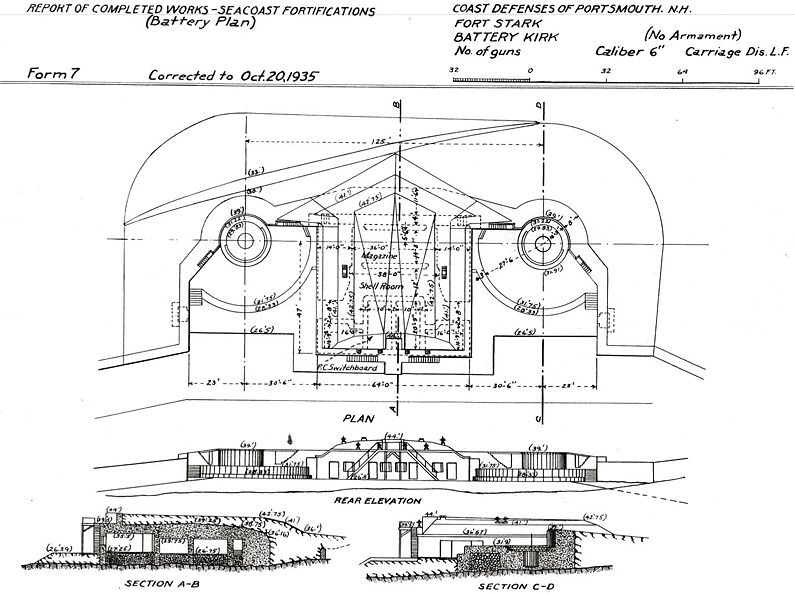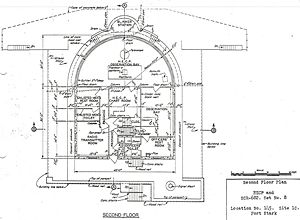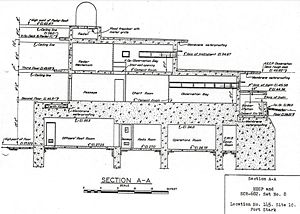Battery Kirk
|
Battery Kirk (1904-1917) - Battery Edward Kirk was a reinforced concrete, Endicott Period 6 inch coastal gun battery on Fort Stark, Rockingham County, New Hampshire. The battery was named in G.O. 194, 27 Dec 1904, after Brigadier General Edward N. Kirk, U.S. Volunteers, who died 29 Jul 1863, of wounds received in action at Stone River, Tennessee, 31 Dec 1862, during the U.S. Civil War. Battery construction started in 1903, was completed in 1904 and transferred to the Coast Artillery for use 31 Dec 1904 at a cost of $ 40,000.00. Deactivated in 1917. Endicott Period (1890-1910)Part of the Harbor Defense of Portsmouth, New Hampshire. Originally built as an Endicott Period concrete coastal gun battery with two 6" M1903 guns mounted on M1903 Disappearing carriages. This was a single story battery with the guns located on the same level as the magazines. Shells were moved from the magazine to the raised gun loading platform by hand. No shell or powder hoists were provided. Electrical power was furnished by the emplacement power plant in Battery Hunter (2).

World War I (1917-1918)The U.S. entry into World War I resulted in a widespread removal of large caliber coastal defense gun tubes for service in Europe. Many of the gun and mortar tubes removed were sent to arsenals for modification and mounting on mobile carriages, both wheeled and railroad. Most of the removed gun tubes never made it to Europe and were either remounted or remained at the arsenals until needed elsewhere. The guns 6" of Battery Kirk were ordered dismounted for use abroad on 24 Aug 1917 and they were transferred to Watervliet on 28 Sep 1917 for modification to mobile mounts. Both guns made it to France in 1918 and they were returned to the United States in 1919 but not to Fort Stark. Battery Kirk was not rearmed. World War II (1941-1945)In 1943-44 a combined Harbor Entrance Control Post (HECP) and Harbor Defense Command Post (HDCP) was built into the magazine structure of the deactivated Battery Kirk. This facility included a new three floor concrete observation station built on top of the magazine structure with an SCR-682 RADAR set on top of that. The observation station structure was disguised as a modernistic building with camouflaged paint. The combined HECP-HDCP facility was accepted for service on 10 Jan 1944 at a cost of $ 93,398.77.
Current StatusPart of Fort Stark State Historic Site, Jerry's Point, New Castle Island, Rockingham County, New Hampshire. No period guns or mounts in place. The HECP-HDCP structure is still in place.
Sources: Links: Visited: 7 Jun 2012 Battery Kirk Picture Gallery
| |||||||||||||||||||||||||||||||||||||||||||||||


